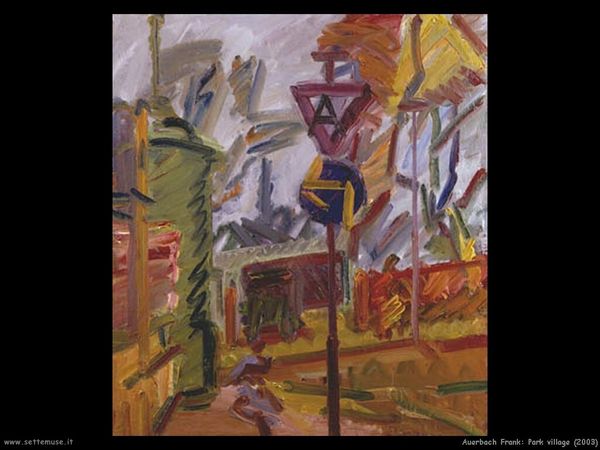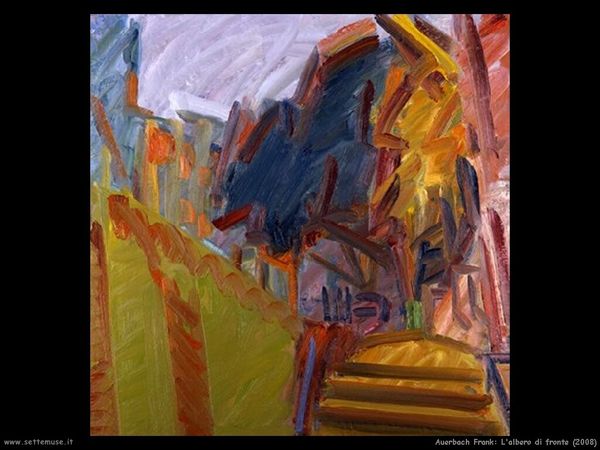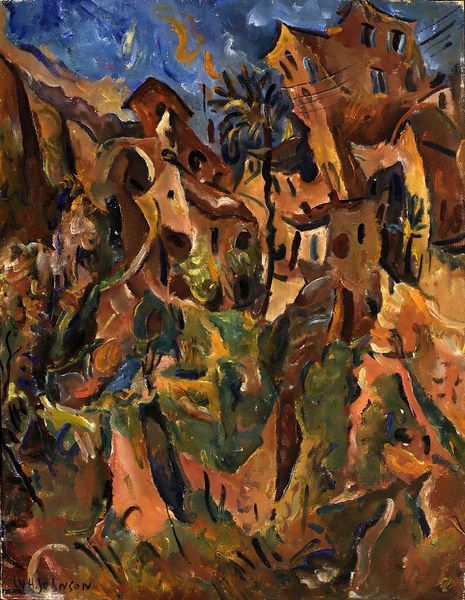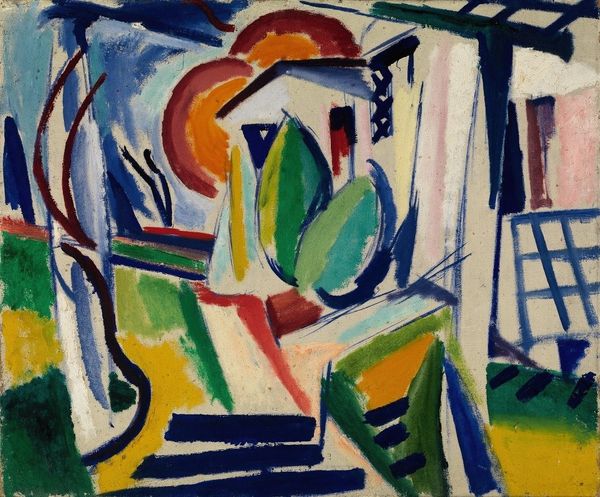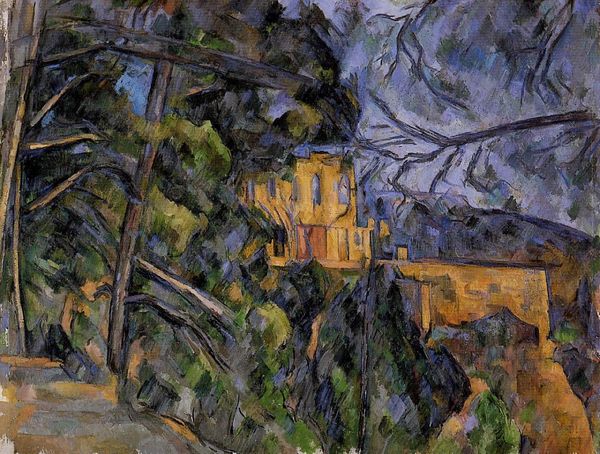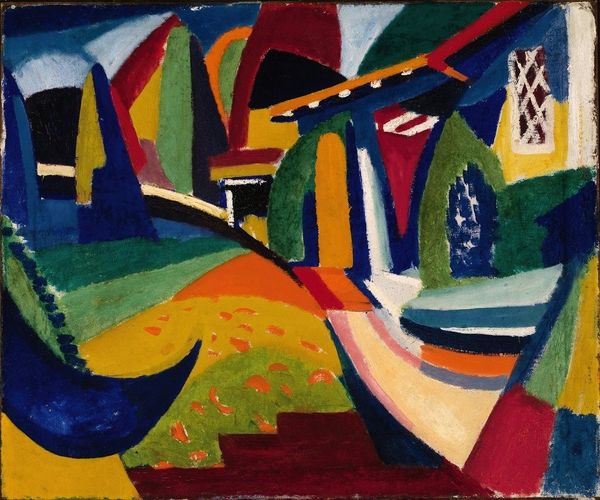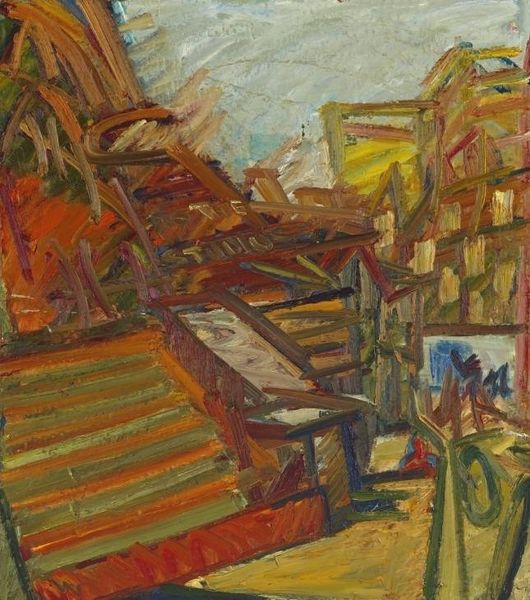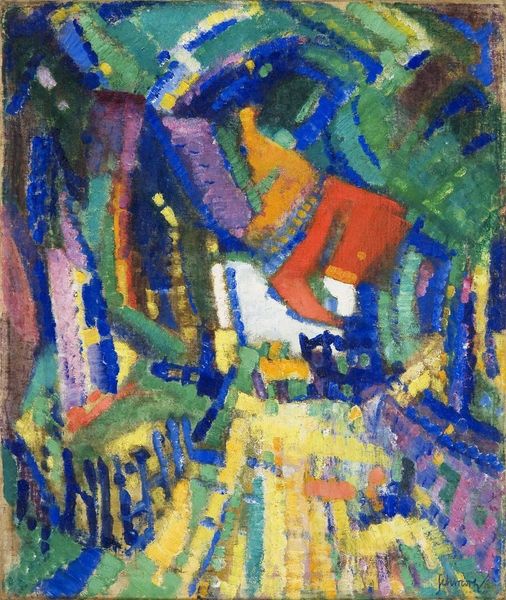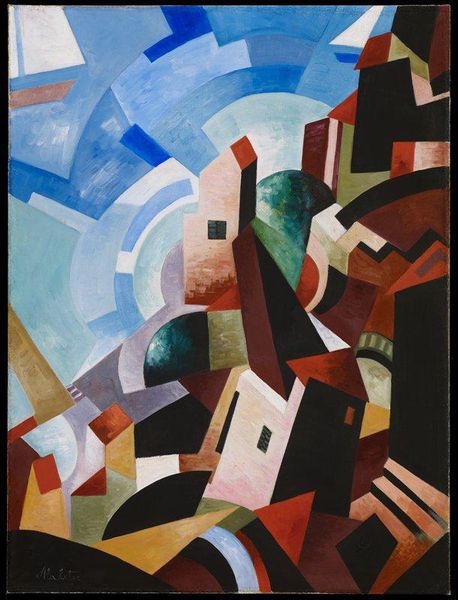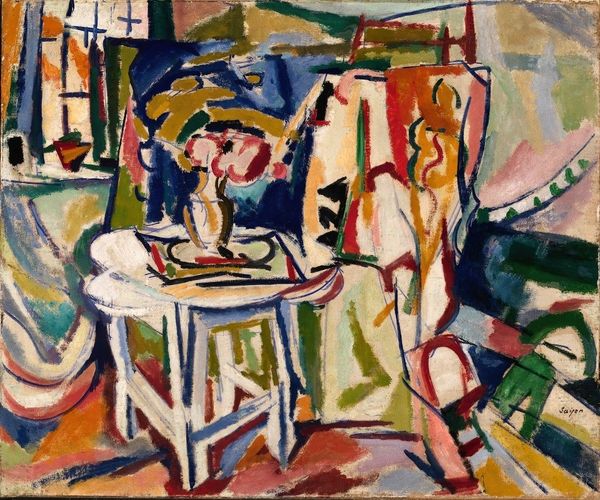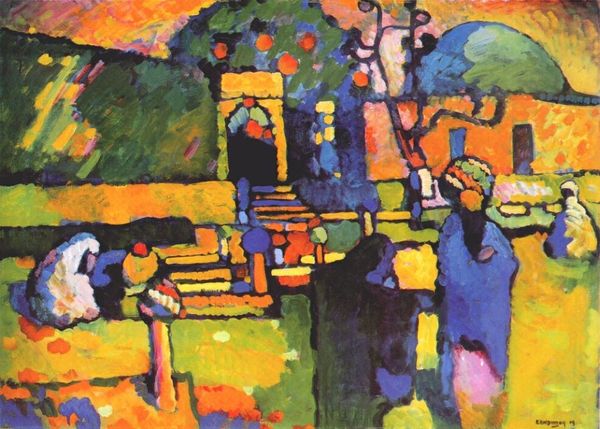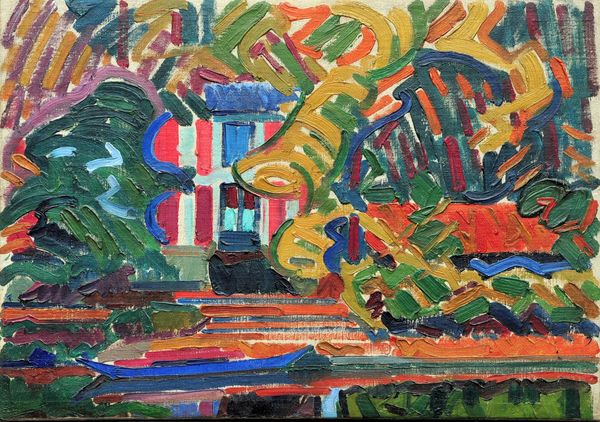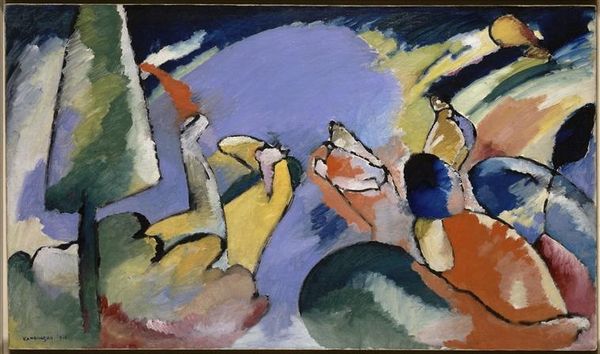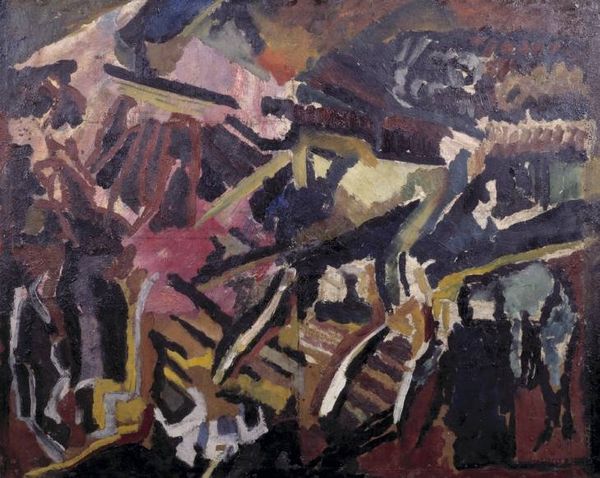
Copyright: Frank Auerbach,Fair Use
Curator: Frank Auerbach’s "Albero di Fronte," created in 2009, presents us with an arresting landscape painted in oil. What are your initial thoughts? Editor: It feels burdened. There's a heavy impasto, the weight of the paint itself suggesting a density of emotion, maybe even anxiety. Curator: Auerbach was known for his application of thick paint. This almost sculptural approach…it really asks us to consider the physical process, the labor involved in its creation. I’m thinking about the materiality of art making right now. Editor: Absolutely, but beyond just materiality, I'm struck by how the crude depiction of the tree—those bold strokes attempting to represent its branches and overall presence. It's an old motif – the tree of life perhaps? – here transformed into a stark, almost skeletal thing. Curator: I agree that it moves past realism. It's expressionistic, definitely. Consider the socioeconomic context. Auerbach, as a refugee from Nazi Germany, spent his life grappling with themes of loss and identity. This location might resonate with earlier lived experiences of being an outsider. Editor: That is key to understanding his artistic vocabulary. The fractured representation and limited tonal range perhaps echoing his struggle to assimilate with this newfound country. It makes me think of the Jewish history within London, how cultural memory is carried from place to place. Curator: Yes, the paint handling here, that anxious impasto, might serve as a metaphor for psychological rebuilding. He worked this piece slowly over time so it embodies time in a direct physical manner, something like archaeology of painting itself! Editor: You make an excellent point. I wonder what the image of a tree symbolizes to a man uprooted from his homeland, its deep roots anchoring it to a particular place and past. The image carries considerable cultural baggage, wouldn’t you agree? Curator: Indeed, seeing "Albero di Fronte" through the lens of material production allows us a richer understanding of the themes embedded within, its formal expression revealing the conditions of its making. Editor: And by considering the symbols presented here, in particular the recurring theme of trees within expressionist landscapes, we connect the material with something beyond the present reality—something more profound. Curator: Thank you, I feel like this conversation has brought a new layer of richness for me to see as a materialist and contextual curator. Editor: My pleasure. I feel like our dialogue illuminated several key meanings, from the use of certain symbols, to the effect of these choices on memory and history.
Comments
No comments
Be the first to comment and join the conversation on the ultimate creative platform.
